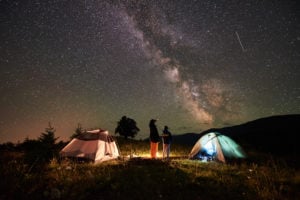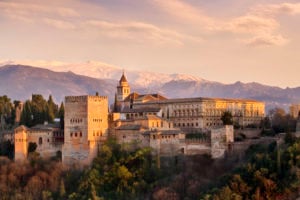India is a land of diversity, and this is evident in the myriad festivals that are celebrated across the country. Every region has its own unique set of festivals, which reflect the local culture and traditions. Indian festivals are always full of color and pageantry. From the traditional costumes to the elaborate decorations, these events are truly spectacular to behold. Planning your trip around one of these festivals is a terrific way to experience the uniquely joyful cultural traditions of the region. In this guide, we’ll break down the sights and sounds of the three most spectacular galas the country has to offer.
Holi, nationwide, March 2023
Holi, known as the festival of sharing and love, or the festival of colors, is a two-day Hindu gala that will take place Wednesday, March 8, 2023. From its ancient origins as a ceremony performed by women to ensure a healthy and happy family, ‘Holika’ has morphed into a variety of festivities that tie themes of kinship and love together with a countrywide celebration of spring. The holiday also bridges in spiritual themes of good vs. evil to create a day when divisions are set aside and unity reigns supreme. For this reason, it is often called the “Festival of Love.”
Holi is typically marked by boisterous celebrations on the day after the full moon in the Hindu month of Phalgun, and is probably most famous for the colorful powders known as ‘gulal’ that are thrown on revelers. Legends abound about this tradition’s origins, but one popular rendition states that Lord Krishna didn’t like his blue-toned face, and was fearful that his true love Radha wouldn’t return his sentiments. His mother suggested that he could paint his face—or hers—any shade that he liked! This has garnered Holi a second popular nickname as the ‘Festival of Colors’.
Holi festivals across India
There’s no shortage of unique and enchanting Holi Festivals to take in. Here are some unique and enchanting Holi Festivals taking place across the country.
- Widows Holi. The city of Vrindavan in Uttar Pradesh is known for its connection to the Hindu god Krishna, and it is also home to the annual Widows Holi festival. While the specifics of the festival vary from year to year, it always takes place on the day after Holi, the Hindu festival of colors. On that day, the widows of Vrindavan come out to participate in color-filled celebrations. In recent years, the festival has become a symbol of hope and empowerment for Indian widows, who are often ostracized by society. The Widows Holi festival provides them with an opportunity to come together and celebrate their lives, even in the face of adversity. It is a reminder that, despite everything, they are still vibrant and alive.
- : Pagal Baba Temple is within 10 minutes of another renowned Holi tradition, ‘Phaloon wali holi’ at Banke Bihari Temple. Here, flowers are thrown on local and international revelers alike by priests to create a bright kaleidoscope of color. Four days later, revelers can again get bathed in rich splashes of hued powders, soak in some blessing with holy water, and enjoy celebratory chanting to close out the temple’s week-long celebrations. The great news is that both of the Pagal Baba and Banke Bihari temples are within 50 miles of the exquisite Taj Mahal.
- Hola Mohalla (Warrior Holi):This unique spin on Hola dates back to 1701 and foregoes the beautiful colors of ‘gulal’ in favor of astounding feats of agility performed by Sikhs of the region. The competitions and shows take place at the architecturally stunning Sikh temple called Takht Sri Keshgarh Sahib in the city of Anandpur, Punjab. This “Holy City of Bliss” comes alive with valiant displays of archery, wrestling, and weaponry alongside intricately crafted traditional costumes, poetry, music, horsemanship, and a dazzling military parade. Local volunteers known as ‘langars’ graciously staff the kitchens, which serve vegan and vegetarian fare to festival goers, and the temple is open to people of all faiths to tour.
Ganesh Chaturthi, Maharashrtra and beyond, September 2023
The Ganesh Chaturthi is a popular 11-day Hindu festival that celebrates the birthday of Lord Ganesha, the god of wisdom and good fortune. The festival typically lasts for 11 days, and is observed with much fanfare and devotion. The festival originated about 125 years ago in Pune, Maharashtra as a peaceful way to unite the Indian people in solidarity against British rule. The festivals have spread out from the city and across the state, as well as to such areas as Dehli in the country’s north and Tamil Nadu in the south. If you are in these areas during early September of this year, you’ll want to be sure to participate in this joyous festival time.
On the first day of the festival, an idol of Lord Ganesha is installed in homes or public squares, and special puja ceremonies are conducted to honor the deity. Over the course of the next ten days, there are special puja ceremonies held each morning and evening, and devotees can be seen carrying small clay idols of Lord Ganesha through the streets in procession. Through the duration of the festival, devotees offer prayers, flowers and sweet foods to Lord Ganesha. On the final day of the festival, the idol is carried in a grand procession and then immersed into a body of water to mark the continuous ebb and flow of life. In 2023, this celebration begins Monday, September 18, 2023.
Popular Ganesh Chaturthi festivals
Although the festival is held in many areas across the country, there are two key areas within Maharashtra that offer visitors an awe-inspiring view into the origins and evolution of this unifying event that draws thousands of international guests each year. The singular experience has been likened to a public party full of fun socializing, celebratory spirituality, and delicious local cuisine.
- Pune Festival: As the original host of Ganesh Chaturthi, Pune provides you with the most authentic experience. One of the highlights of the citywide affair is a visit to the 1893 Dagdusheth Halwai Ganapathi Temple from which the first public celebrations sprang. Each year, its surrounding mandal replicates famous Indian monuments, with dazzling nighttime lighting. You can also partake in numerous activities organized by the state’s tourism board, including auto races, dance performances, music recitals, and film and drama events. The festival’s famous ‘dhol tasha’ (drums) signal a call to freedom for the people of the area while providing beautifully rhythmic entertainment. There’s even an innovative ATM that disperses traditional ‘modak’ pastry full of coconut and ‘jaggerty’ (sap-infused cane sugar) to leave at the nearest Ganesh alter.
- Mumbai Ganesh Festival: Located about three hours northwest of Pune, on the Arabian Sea, Mumbai is often considered the “heart” of India, making it an especially appropriate place for this joyous and important festival. The Mumbai Ganesh festival is one of the largest and most popular festivals in India, attracting devotees from all over the country.
For a close-up view of the world’s most famous Ganesh idols, head to the city’s central district of Lalbaug. Here the 1934 Lalbaugcha Raja and nearby 1928 Mumbaicha Raja tower over the area, demanding sweets be laid at their altars. Stunning gold-encased and city-themed decorative mandals surround these idols. You can also take the uniquely immersive Spirit Behind Mumbai’s Favorite God tour that includes a meal with a local family featuring such delicacies such as ‘bharli vangi’ (stuffed eggplant), ‘koshambir’ (a local salad), and of course the famously sweet ‘modak’. Local guides will walk you through the traditional private ceremonies before inviting you to a public statue viewing and evening ‘aarti’ (prayers by candlelight).
- Goa Ganesh Festivals: Goa, India’s smallest state, sits in the southwestern corner of Maharashtra, on the Arabian Sea. A popular tourist locale due to its many beautiful beaches, natural wonders, and historic architectural sites, the region hosts a variety of Ganesh celebrations. The Ganesh is considered Goa’s most significant annual festival. Highlights include lavish flower competitions, folk dances of the Fugdi performed by the area’s women, and ornately decorated ‘Sarvajanik Ganeshostav’ (public Ganesh) mandals , resembling those found in the church square of the capital city of Panaji. Visitors can also head a few miles north to the quaint village of Mapusa to view an amazing array of fruit, plant, and flower-infused matolis (market stalls) set up to honor Lord Ganesh. These stalls double as eco-centers of traditional medicinal knowledge, where both locals and tourists converge to learn about the region’s rich horticultural heritage.
Pushkar camel fair, Pushkar, Rajasthan, November 20-27, 2023
The city’s namesake Pushkar Lake dates back to at least the 4th century B.C., and is one of the holy places mentioned in many ancient Hindu texts. Thought to be a sight where Lord Brahma triumphed over dark forces, it has long been a gathering place for pilgrims who believe that 330 gods and goddesses come together each year during November’s full moon to consecrate the water.
This extravaganza, also known as ‘Kartik Mela’ (November Fair) or ‘Pushkar Mela’, combines commerce and spirituality and attracts upwards of 200,000 visitors annually. Many attending are the camel and livestock traders sporting bright-colored turbans who make a living from farming and transporting caravans across the desert. An astounding 20,000 camels join the many visitors at this multi-faceted, week-long celebration, which is the largest of its kind in Asia.
Cultural festivities highlights
- Camel Charisma Stand: At this popular stand, famed camel-keeping communities of Raika and Rabari create crafts, clothes, delectable cheeses, and delicious treats from these amazing animals’ wool, milk, and yes – even dung! Their popular dung paper notebooks and journals are a must have for culture lovers everywhere.
- Moustache competition : One of the most popular attractions at the fair is the mustache competition. The competition is open to anyone with a mustache, and the participants are judged on the length, thickness, and overall style of their facial hair.
- Matka (Earthern pot) competition: One of the most popular attractions at the festival is the Matka pot competition. The pots are filled with milk, and the participants must try to break them with their bare hands. The person who breaks the most pots is declared the winner. The competition is believed to bring good luck, and it is also a great way to show off your strength.
- Pushkar Lake Candle Floating Ceremony: Known as ‘Deepdaan’, this beautiful early evening event marks the beginning of the first full day of festival activities. It is followed by an uplifting and inspiring concert by Prem Joshua at the Fairground’s stadium at 7:30 p.m.
- Daily Hot Air Balloon Flights: Launched in 2010, the city’s annual Hot Air Balloon Festival was created to coincide with the Camel Fair, and offers visitors rides with amazingly tranquil views of the bustling festival and breathtaking lake scenes below. There are also special ‘night glow’ concerts showcasing balloons from all over the world that take place above the fairgrounds and light up the night sky.
- Pushkar Lake Fireworks: The festival’s final day sees thousands of devout Hindus and secular pilgrims alike coming together on the night of the full moon for a cleansing bath that honors Brahma’s celebrated triumphs and unites people in peace. A ‘maha aarti‘ (worship by fire) ceremony highlighted by singing and thousands of lighted candles is followed by a world-class pyrotechnics display at the High Level Bridge.
India festival cultural guidelines
India is a land of incredible diversity, with dozens of languages spoken and a wide variety of religious and cultural traditions. As a result, it’s important to be respectful of local customs when visiting. Here are a few simple etiquette guidelines to follow:
- For men and women, dress in non form-fitting clothing with both shoulders and knees covered
- Provide hosts with a small gift to show your appreciation
- Be aware that tradition sometimes allows for the relaxation of public behavior codes during certain festival events
- Get ready for big crowds with lots of singing, chanting, and boisterous fun
Travelers to India are welcomed with open arms to fully participate in the vibrant pageantry of India’s most loved national festivals. Feel free to bring your favorite ‘gulal’, your dancing shoes, and your appetite for adventure! If you’d like help planning and coordinating your upcoming journey to India, don’t hesitate to contact a travel agency that specializes in setting up exciting and culturally diverse tours.






